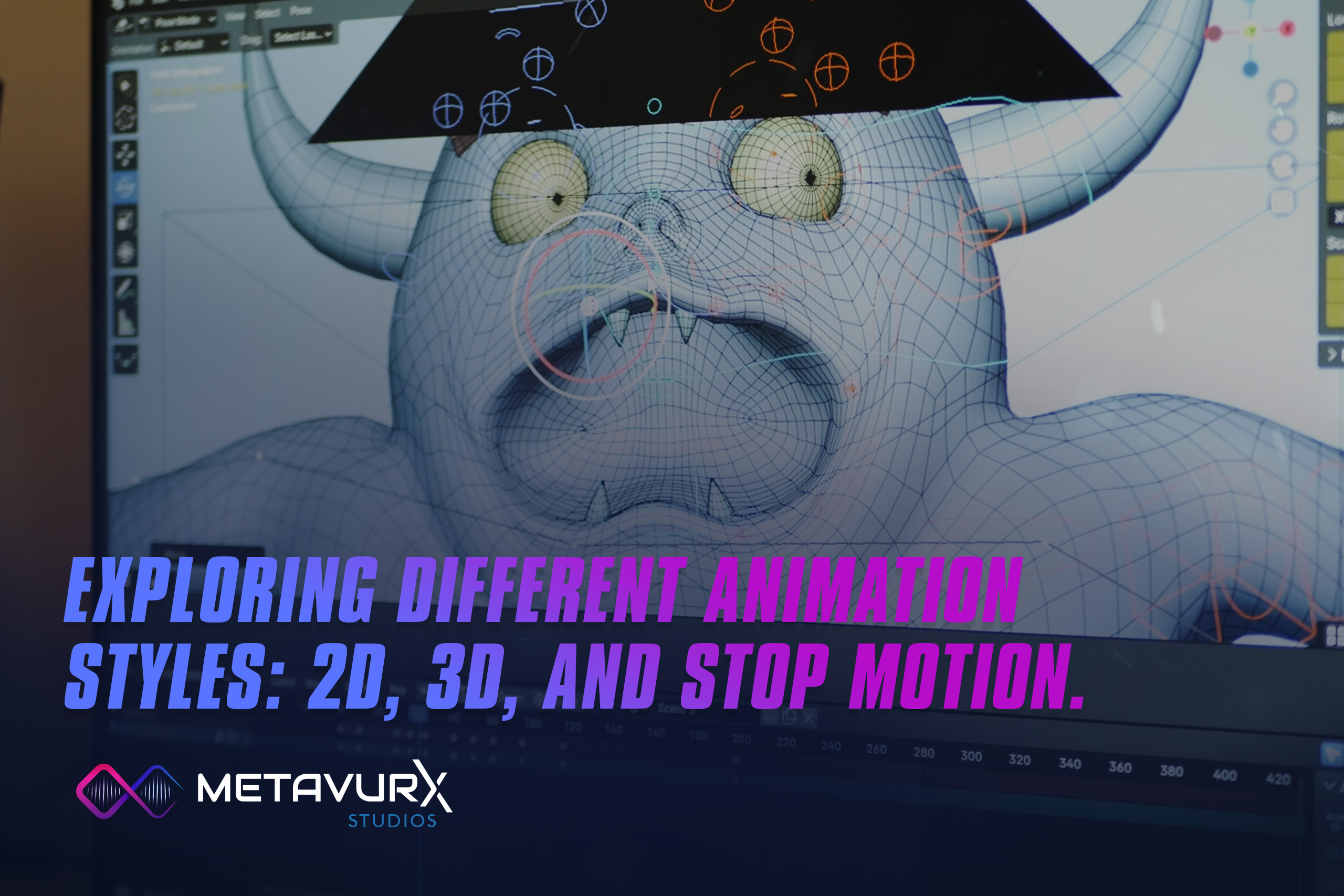Animation is a broad and dynamic field with a wide range of styles and approaches. Stop-motion, 2D, and 3D are the most notable, and for animators, every style presents different opportunities and difficulties. Comprehending these approaches can help you appreciate the creativity and effort behind your favorite animations.
Exploring Different Animation Styles: 2D 3D, and Stop Motion
Stop motion, 2D, and 3D animation all provide distinctive visual experiences and technological methods. For expressive storytelling, 2D animation requires creating flat pictures on a two-dimensional plane, either through hand drawing or digital rendering.
3D animation, which creates three-dimensional models and environments using computer software, makes realistic movement and intricate textures possible. Through meticulous, manual labor, stop-motion animation creates a distinct and tactile visual experience by physically moving things frame by frame.
The Timeless Charm of 2D Animation
Among the earliest and most popular types of animation is two-dimensional animation. In this style, two-dimensional characters and scenes are usually produced digitally or by hand. This method is used in popular TV series and classic Disney films, creating individual frames that are sequenced to produce motion.
2D animation creates a unique, hand-crafted style many viewers find adorable and nostalgic enabling fluid movements and emotive character designs. Even though 2D looks simple, it takes a lot of talent and imagination to make characters come to life. Because of its distinct style and storytelling potential, 2D animation is still widely used today, even with technological developments.
Nevertheless, 2D animation requires significant effort, as drawing each frame individually demands patience and keen attention to detail. While this procedure has been made more efficient by modern tools, the underlying ideas are still the same. For projects where the artistic concept prioritizes visual expression and character-driven storytelling, this style is perfect.
The Realism and Flexibility of 3D Animation
Because 3D animation could create realistic, immersive environments, it completely changed the industry. With this technique, intricate movements and textures are possible because characters and environments are rendered in three dimensions. Renowned for their breathtaking three-dimensional animated movies are Pixar and DreamWorks, using specialist software, the process starts with character and scene modeling, rigging, and animation.
Unmatched versatility and realism are available with 3D animation as it makes it possible for animators to provide detailed details and realistic movements that are challenging to accomplish in 2D. Virtual reality experiences, video games, and movies all frequently employ this aesthetic. Its realism in terms of lighting and physics enhances the immersive experience.
However, 3D animation may be resource-intensive, needing specialized software and expensive technology. There are several steps in the production process, and there might be a high learning curve. Notwithstanding these difficulties, the outcomes can be aesthetically pleasing and amazingly realistic.
The Unique Appeal of Stop-Motion Animation
A distinct and engrossing animation technique, stop motion animation entails physically modifying objects frame by frame. With the use of this technology, lifeless objects come to life and produce a unique, tactile visual experience. Photographing objects in incremental movements and sequencing the photographs to generate motion is the approach used to produce the famous animations “Wallace & Gromit” and “The Nightmare Before Christmas.”
Due to their actual physical presence, stop-motion animation’s tangible models and sets offer realism and texture unmatched by digital techniques. This aesthetic encourages artistic experimentation with materials and methods, producing animations with a distinct visual style. For animators, stop-motion’s hands-on approach may be immensely fulfilling.
However, stop-motion requires significant time and energy, as the lengthy production process involves meticulous setup and tweaking for each frame. Nonetheless, the outcomes are frequently worthwhile due to the lifelike and distinctive animations. For projects that benefit from an artisanal, handcrafted touch, stop-motion is perfect.
Conclusion
Examining various animation styles demonstrates the range of opportunities in the industry. 2D animation has enduring appeal and plenty of expressive possibilities, while 3D animation offers flexibility and realism.
The distinct, tactile texture of stop-motion animation captivates viewers. Animation is a rich and diverse art form, with each style having its own advantages and disadvantages. Gaining an appreciation for these genres improves one’s understanding of the imagination and labor required to make animations come to life.


